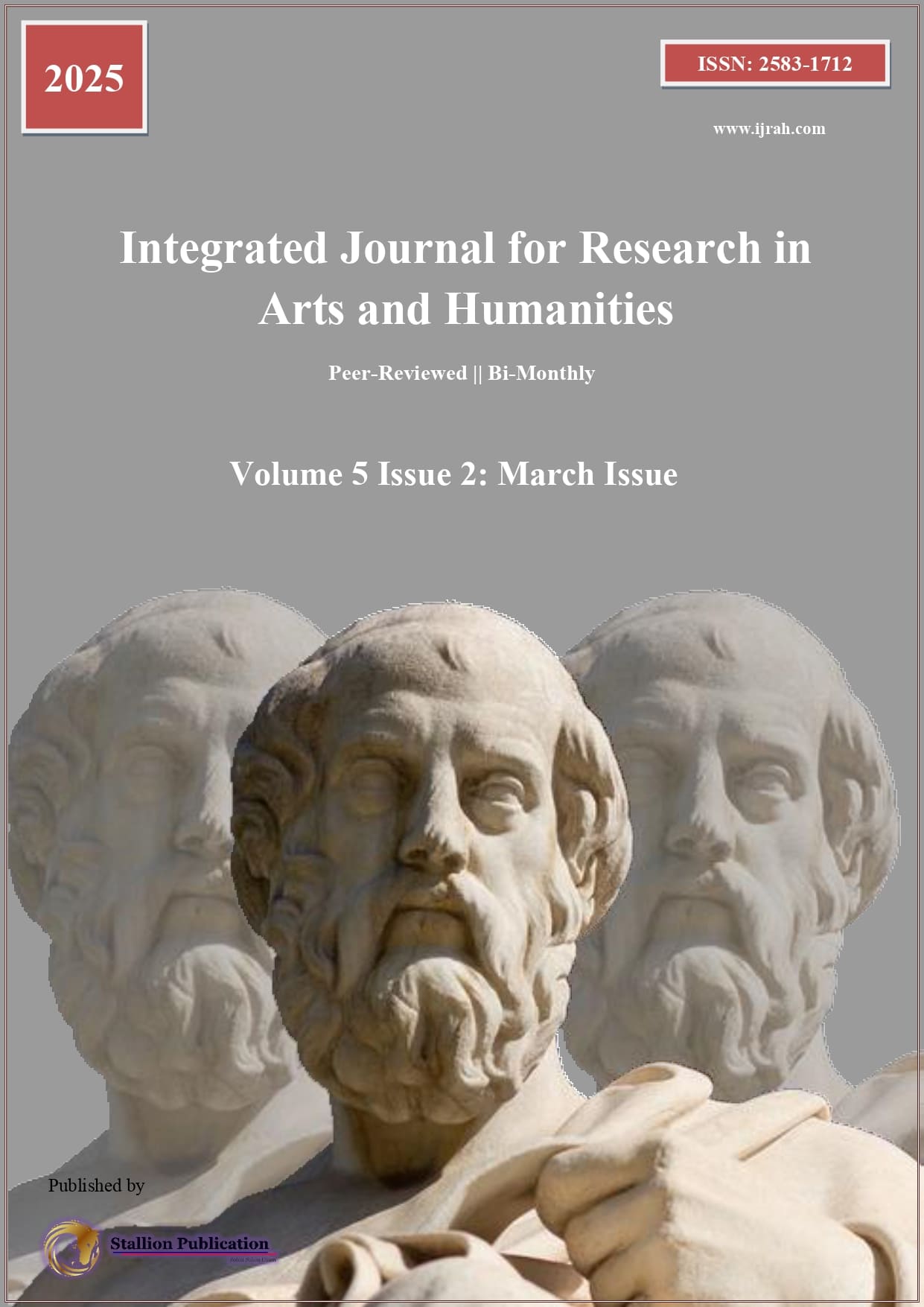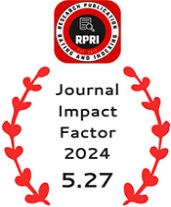The Impact of Internet and Mobile Banking on Customer Satisfaction in Afghanistan's Commercial Banks
DOI:
https://doi.org/10.55544/ijrah.5.2.19Keywords:
Afghanistan Banking, Mobile Banking, Internet Banking, Customer Satisfaction, Digital BankingAbstract
This study examines the impact of Internet and Mobile banking on customer satisfaction in Afghanistan’s commercial banks. With the increasing adoption of digital financial services, understanding how factors such as convenience, security, accessibility, and service quality influence customer experience is essential. Using a quantitative research approach, this study collected survey data from customers of Afghanistan International Bank, Azizi Bank, and the Islamic Bank of Afghanistan. Findings reveal that Internet and Mobile banking significantly enhance customer satisfaction by offering seamless transactions, increased accessibility, and reduced reliance on physical banking. However, security concerns and limited digital literacy in rural areas pose challenges to widespread adoption. The study highlights the need for improved digital banking infrastructure and stronger security measures to build customer trust. Based on these insights, policy recommendations are provided to enhance the efficiency, reliability, and security of digital banking services in Afghanistan’s commercial banking sector.
Downloads
Metrics
References
Syahrani, F.N., Daulay, A.N., & Nurbaity. (2023). The Influence of Self Service Technology (SST) on Customer Satisfaction of Digital Services Users at Indonesia Islamic Bank. Airlangga Journal of Innovation Management, 4(1), 84-99.
Bogicevic, V., Bujisic, M., Bilgihan, A., Yang, W., & Cobanoglu, C. (2017). The impact of traveler-focused airport technology on traveler satisfaction. Technological Forecasting and Social Change, 123, 351-361.
Chen, L., Gillenson, M.L., & Sherrell, D.L. (2016). Enticing online consumers: An extended technology acceptance perspective. Information & Management, 39(8), 705-719.
Pakurar, M., Haddad, H., Nagy, J., Popp, J., & Oláh, J. (2019). The Service Quality Dimensions that Affect Customer Satisfaction in the Jordanian Banking Sector. Sustainability, 11(4), 11-13.
Kasiri, L., Cheng, K., Sambasivan, M., & Sidin, S. (2017). Integration of standardization and customization: impact on service quality, customer satisfaction, and loyalty. Journal of Retailing and Consumer Services, 35, 91-97.
Fernandes, T., & Pedroso, R. (2017). The effect of self-checkout quality on customer satisfaction and repatronage in a retail context. Service Business, 11(1), 69-92.
Alanazi, A., & Bach, C. (2016). Factors that affect and enhance customer satisfaction. Journal of Research in Business and Management, 4(9), 80-88.
Özer, A., Argan, M., & Argan, M. (2013). The effect of mobile service quality dimensions on customer satisfaction. Procedia-Social and Behavioral Sciences, 99, 428-438.
Jham, V. (2016). Internet banking in the UAE: Reliability, efficiency, comfort, and security as significant factors influencing customer satisfaction. International Journal of Bank Marketing, 34(3), 310-328.
Ankit, S. (2011). The impact of core services, convenience, responsiveness, and privacy on Internet banking satisfaction in India. Asian Journal of Management Research, 2(1), 350-366.
Zhou, T., Lu, Y., & Wang, B. (2010). Integrating TTF and UTAUT to explain mobile banking user adoption. Computers in Human Behavior, 26(4), 760-767.
De Leon, M., Tiongson, C., & Concepcion, R. (2020). Digital banking adoption: Challenges and strategies for customer engagement. Philippine Journal of Business and Economics, 7(2), 45-60.
Herington, C., & Weaven, S. (2007). Can banks improve customer relationships with high-quality online services? Managing Service Quality: An International Journal, 17(4), 404-422.
Hammoud, J., Bizri, R.M., & El Baba, I. (2018). The impact of e-banking service quality on customer satisfaction: Evidence from the Lebanese banking sector. SAGE Open, 8(3), 1-12.
Rod, M., Ashill, N.J., Shao, J., & Carruthers, J. (2009). An examination of the relationship between service quality dimensions, overall internet banking service quality, and customer satisfaction. Marketing Intelligence & Planning, 27(1), 103-126.
Aljasser, N., & Sasidhar, B. (2016). Assessing the impact of e-service quality on customer satisfaction in the banking industry. International Journal of Business & Economic Development, 4(1), 75-85.
Alhawari, M., & Alsmeran, W. (2017). Online banking services and customer satisfaction in Jordan’s Islamic banks. Journal of Islamic Marketing, 8(4), 599-618.
Almotairi, M., Almeshal, S., & Alam, A. (2013). Online service quality and customers’ satisfaction: A case study of the selected commercial banks in Riyadh (Saudi Arabia). Pensée Journal, 75(12), 188-200.
Jun, M., & Palacios, S. (2016). Examining the key dimensions of mobile banking service quality: An exploratory Study. International Journal of Bank Marketing, 34(3), 307-326.
Rochmah, N., & Ernawati, R. (2022). The Impact of Internet Banking on Customer Satisfaction: A Case Study. Journal of Business and Economics, 10(1), 21-35.*
Khumaini, S., Fahrudin, & Samsuri. (2022). Pengaruh Fasilitas Layanan Internet Banking dan Mobile Banking Terhadap Kepuasan Nasabah Bank Syariah Indonesia Kantor Cabang Tangerang. Al Maal: Journal of Islamic Economics and Banking, 3(2).
Syamtoro, T., Rahayu, D., & Nugraha, H. (2020). Digital banking service innovation and customer satisfaction. Journal of Financial Services Innovation, 5(1), 1-15.
Agustina, M., & Krisnaningsih, A. (2023). The Impact of Mobile Banking on Customer Satisfaction: A Case Study. International Journal of Banking and Finance, 12(2), 112-128. *
Sari, N., Prasetyo, D., & Widodo, H. (2022). Mobile banking usability and its influence on customer experience and satisfaction. Journal of Economic Perspectives, 9(3), 87-102.
Field, A. (2013). Discovering statistics using IBM SPSS Statistics (4th ed.). Sage, Thousand Oaks, CA.
Hair, J.F., Black, W.C., Babin, B.J., & Anderson, R.E. (2014). Multivariate Data Analysis (7th ed.). Pearson.
Tabachnick, B.G., & Fidell, L.S. (2019). Using multivariate statistics (7th ed.). Pearson.
Garver, M., & Mentzer, J.T. (1999). Logistics research methods: Employing structural equation modeling to test for construct validity. Journal of Business Logistics, 20(1), 33-57.
Carmines, E.G., & Zeller, R.A. (1979). Reliability and Validity Assessment. Sage.
Kent, R. (2015). Marketing Research: Approaches, Methods and Applications in Europe. Cengage Learning.
Saunders, M., Lewis, P., & Thornhill, A. (2016). Research Methods for Business Students (7th ed.). Pearson.
Almanasreh, E., Moles, R., & Chen, T.F. (2019). Evaluation of methods used for estimating content validity. Research in Social and Administrative Pharmacy, 15(2), 214-221.
Byrne, B.M. (2016). Structural Equation Modeling with AMOS: Basic Concepts, Applications, and Programming (3rd ed.). Routledge.
Downloads
Published
How to Cite
Issue
Section
License
Copyright (c) 2025 Mohammad Yusuf Saleh, Najibullah Arshad, Mohammad Ismail Basharmal, Hamdullah Azimi

This work is licensed under a Creative Commons Attribution-NonCommercial-NoDerivatives 4.0 International License.

























